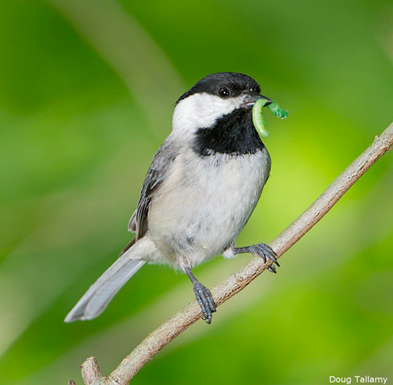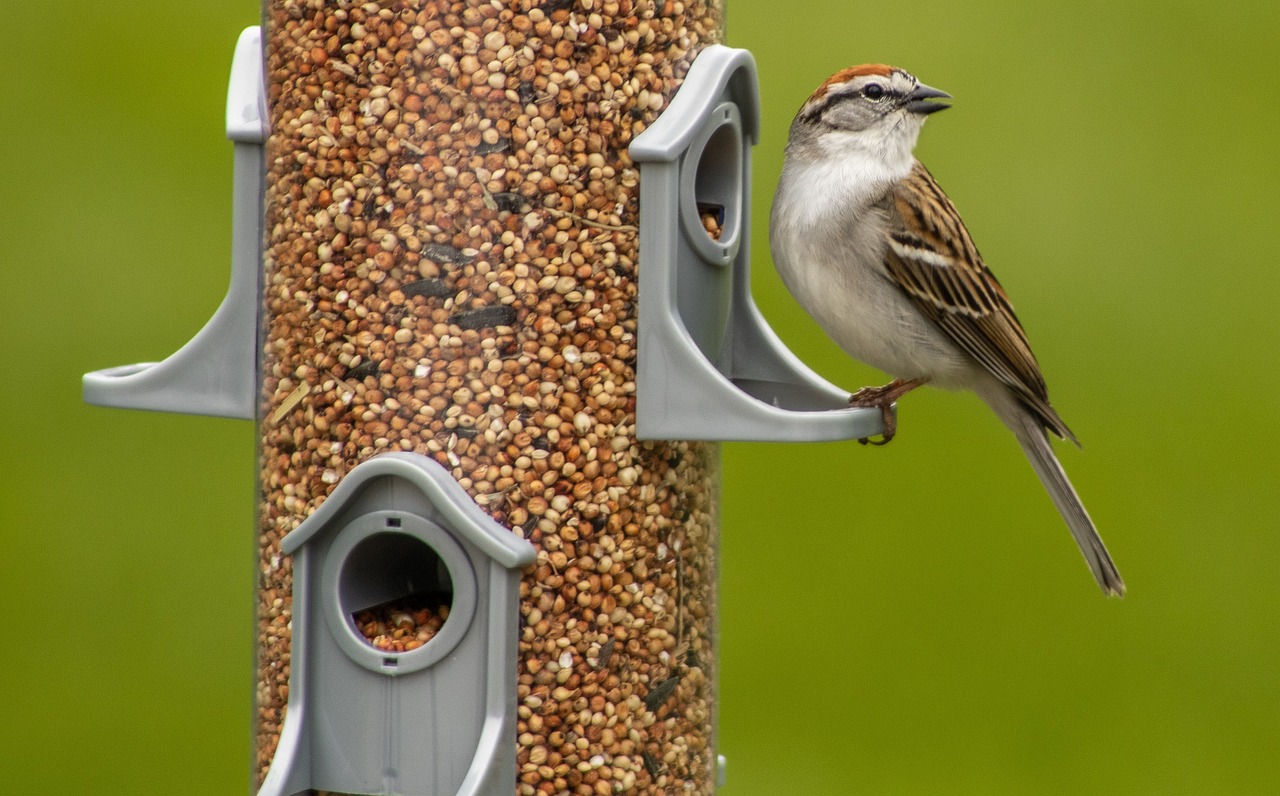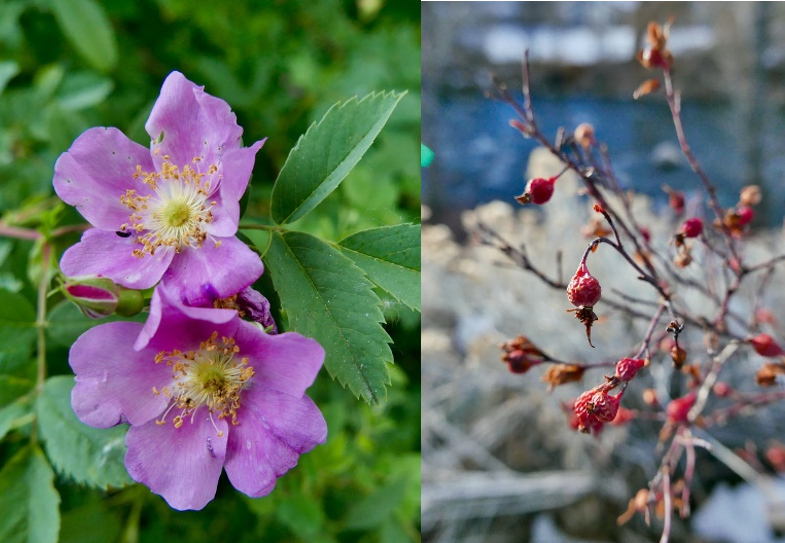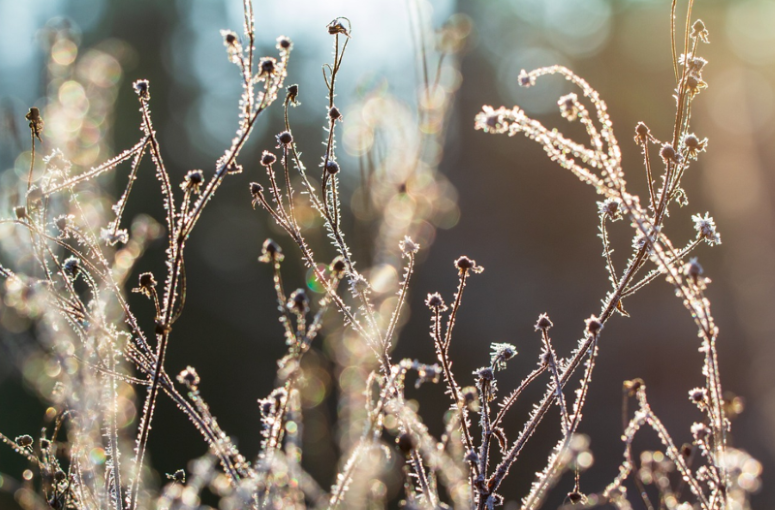Free Pest Control!
Do you love the sound of cheerful chirping songbirds in the morning? Do you enjoy backyard bird watching? These are good reasons to create bird-friendly yards, but did you know that birds also provide excellent pest control?
A recent study from University of Delaware and Smithsonian Migratory Bird Center found that it takes more than 5,000 caterpillars to raise a clutch of Carolina chickadees! (Read more about this here.) While adult birds feed on many different food sources, baby birds need a high protein diet that consists almost entirely of insects and caterpillars (or other insect larvae).
That means you want to recruit this momma bird to your pest management team!!!
 An adult Carolina chickadee with a caterpillar that it will feed to its hatchlings. (Photo credit: Doug Tallamy)
An adult Carolina chickadee with a caterpillar that it will feed to its hatchlings. (Photo credit: Doug Tallamy)
If you want to encourage birds in your yard, here are a few tips to help them out in the winter months.
Winter Bird-Friendly Garden Tips
Tip # 1: Put out a bird feeder
While baby birds need insects, many adult birds rely on seeds during the winter months. There has been debate about whether bird feeders are good for birds, but a recent UNR Chickadee Cognition Lab study found no negative impacts to supplemental feeding when proper food is used. (You can read more about that study on this website.)
- Make sure to put out foods that the birds would commonly find in nature, like pine nuts or black-oil sunflower seeds.
- Don’t include “junk food” like bacon grease or bread products.
- Place feeders in locations not easily access by predators or too close to windows.
- Be sure to regularly clean out your feeders and sanitize them to reduce the potential for spreading disease.
- And if possible, try providing plants that provide the food instead of feeders. More on that below….
 A sparrow visiting a bird feeder. (Photo credit: Gabriel Douglas from Pixabay)
A sparrow visiting a bird feeder. (Photo credit: Gabriel Douglas from Pixabay)
Tip #2: Provide a heated birdbath
Birds need access to clean water to drink, and in the winter months, it is helpful if they have access to a water source that doesn’t freeze over. So if you have the opportunity to install a heated bird bath, this can be a big help to birds during the winter months.
Tip #3: Plant native plants
Native plants are the best choice for providing food for birds. Native plants support native insect populations because they have coevolved together. For example, it is estimated that 90% of moth and butterfly caterpillars depend on a specific native plant or group of native plants as their food source. Since birds are so dependent on caterpillars as a food source, they also need the native plants.
- The previously mentioned University of Delaware and Smithsonian Migratory Bird Center study suggests that you aim for at least 70% native plants in your yard to help support native insects and birds.
- Some Nevada native plants that provide good food sources for caterpillars include:
- chokecherry, desert peach, bitterbrush, gambel oak, and desert mallows
- Many native plants also provide seeds and berries for birds and a few to consider for Nevada include:
- Seeds: common sunflower, sagebrush, rabbitbrush
- Berries: wild rose, thimbleberry, snowberry, currants, chokecherry, Oregon grape, serviceberry, sumac, and buffaloberry
 A native wild rose (Rosa woodsii) in flower during the summer months (left) and in fruit, typically called hips, during the winter months (right). (Photo credit: Carrie Jensen)
A native wild rose (Rosa woodsii) in flower during the summer months (left) and in fruit, typically called hips, during the winter months (right). (Photo credit: Carrie Jensen)
Tip #4: Leave some leaves or a brush pile
Leaves and brush piles create complexity in the landscape with different niches and overwintering habitats for different creatures, including birds and beneficial insects. Birds often forage through leaf and brush piles to find food and also seek out shelter from them.
- Just remember to remove these flammable materials before fire season.
Tip #5: Leave dormant plants over the winter
It is enticing to keep a clean and tidy yard, and many of us rush to trim out dead materials and clean up in the fall. However, things like old sunflowers and ornamental grasses can provide seeds as winter food sources for birds. Think twice before pruning and cleaning everything out in the fall. Plus, this may add some seasonal visual interest to your yard during the cold summer months.

Dried seed heads and grasses covered in frost add seasonal interest to a garden (Photo credit: Nicky Pe from Pixabay)
Additional Resources
For more reading on bird-friendly gardening, check out these additional ideas from the National Audubon Society.


